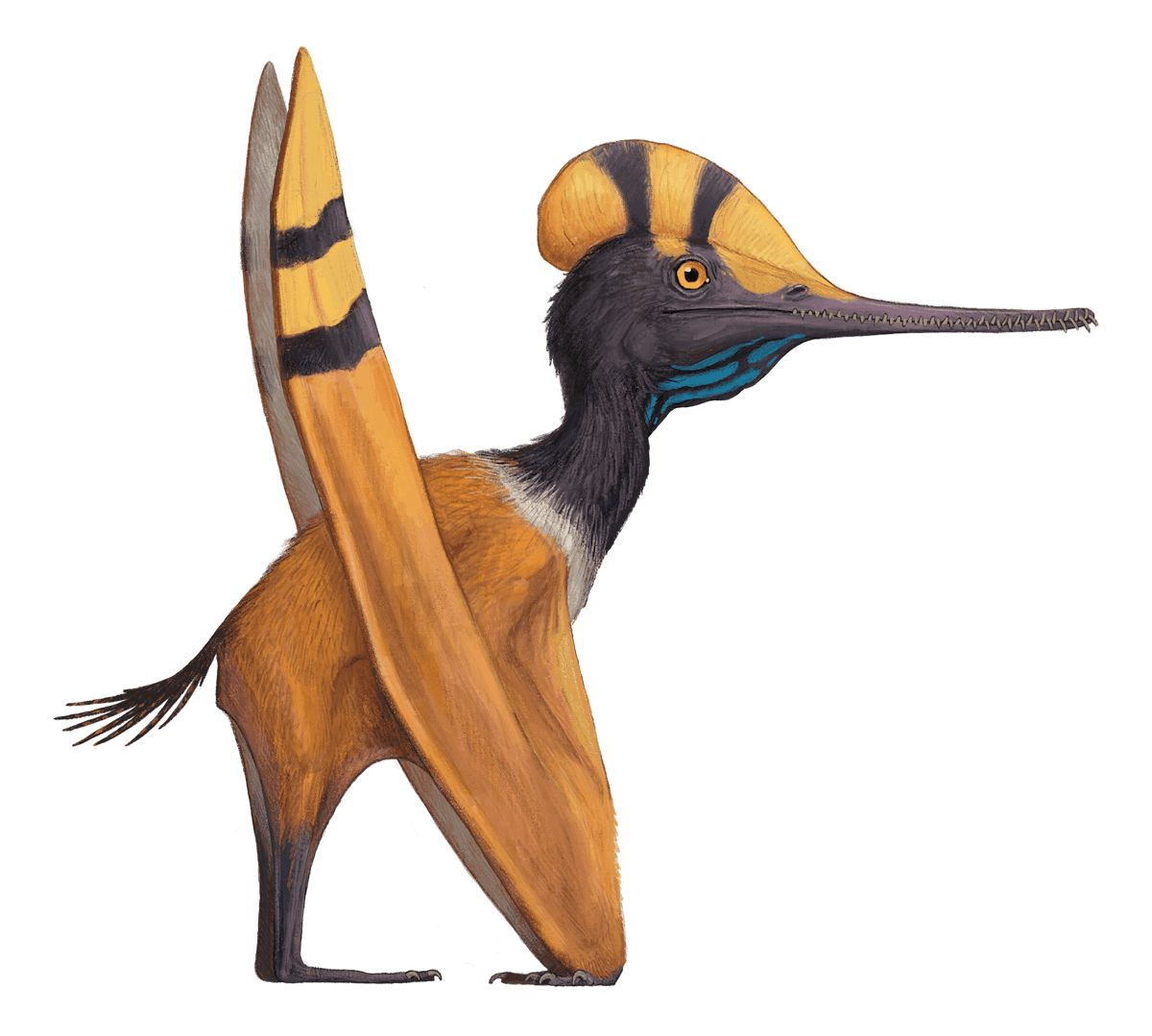Otogopterus
Family

Ctenochasmatidae


Family

Ctenochasmatidae

In 2020 paleontologists Ji Shu’an and Zhang Lifu named a new ctenochasmatid pterosaur, Otogopterus haoae. It was discovered in rocks of the Lower Cretaceous Luohandong Formation in the Ordos Basin of Inner Mongolia, north central China. The genus name translates to “Otog [Municipality] wing,” and the species name honors paleontologist Hao Yinchun.
Otogopterus is only known from a single specimen, a partial mandible missing both its front and rear ends. The mandible fragment is from the symphysis and is about 9.5 cm (3.75 inches) long. It tapers slightly from back to front, going from about 9 mm to 7 mm (1/3 to 1/4 inch) in width.
There are 26 pairs of tooth sockets preserved in the specimen, but likely had many more teeth both to the front and rear of the fragment. Although no teeth are preserved, it’s clear they were long and narrow, and directed outward and slightly forward, rather than upward. This is similar to what’s seen in other ctenochasmatids, but the teeth of Otogopterus appear to have been relatively thick compared to other members of its family.
Nothing else is known of the skeleton of Otogopterus, but based on comparisons to other ctenochasmatids, its wingspan would have been roughly 1.5 m (5 feet).
Like other ctenochasmatids, Otogopterus is thought to have fed by wading into shallow water and dabbling in weeds and mud looking for small invertebrate prey. Otogopterus lived on the shores of a large inland lake within the Ordos Basin, and was surrounded by mountains. Its habitat also included woodlands, large deltas, and dune fields.
Geological Age
Early Cretaceous


